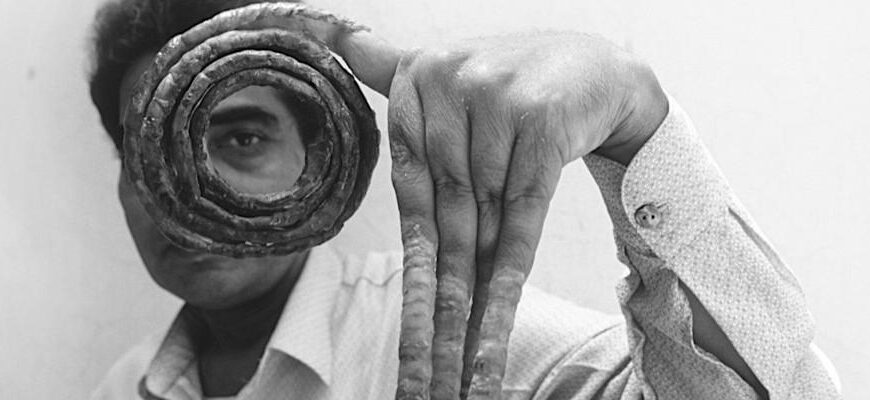- How Fast Do Fingernails Grow?
- Factors that slow down nail growth
- Treatments to speed up nail growth
- Conditions that slow down nail growth
- Why Do Our Nails Grow and What is Their Function in Our Body?
- A growing part of a nail
- The growth pattern of fingernails
- Function of fingernails
- Signs of unhealthy nails
- Dietary factors that affect nail growth
How Fast Do Fingernails Grow?
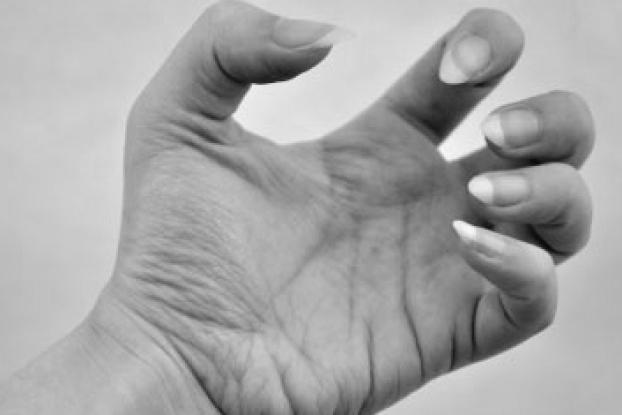
How fast do your fingernails grow? Whether you want them to grow fast or slowly depends on your lifestyle. Summers are generally faster for fingernails than winters. In addition, fingernails require more trimming than toenails. If you want your nails to increase, it is essential to trim them regularly. Fortunately, several treatments are available that can help you accelerate the process.
Factors that slow down nail growth
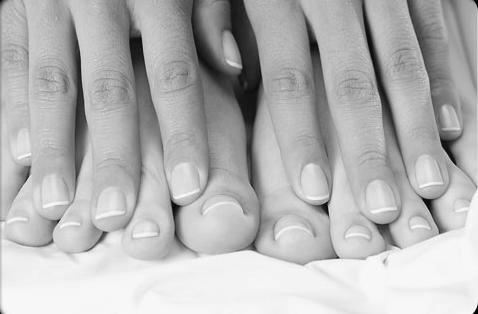
Regardless of your age and gender, you should be aware of certain factors that slow down the growth of your nails. Aging and poor nutrition can cause a significant slowdown in nail growth. Mineral deficiencies can also reduce the rate of growth. The good news is that there are a few ways to make your nails grow faster and healthier. The following are just a few tips for growing your nails faster. You can start by following a proper nail care routine to improve the growth of your toenails.
In addition to age, certain medications and other factors can slow the growth of your nails. Age and blood circulation affect nail growth, and the Body uses available nutrients to fight disease and illness. Some of the factors that can slow down nail growth include vitamin deficiency and smoking. A doctor can prescribe a special diet for you or recommend a particular vitamin or supplement. Taking proper care of your nails can also help the growth of your fingernails.
Diet contains several factors affecting nail growth, from diet to lifestyle. A good source of protein is eggs, fish, meat, and poultry. Lentils, nuts, and dairy products are also excellent sources of protein. However, too little protein can also negatively affect nail growth. Diets rich in protein are essential for healthy nails, so make sure to include protein in your diet regularly.
Exposure to harsh chemicals, infection, or illness can lead to changes in the growth of your nails. These changes disrupt the natural growth cycle and can lead to breakages. People who carry weights or run will almost always have broken toenails. If you experience brittleness in your nails, you may be suffering from a medical condition such as diabetes or lung disease. You should consult a doctor immediately if you notice any changes in your nails.
Use a vitamin-enriched nail polish remover if you are a nail file user. Also, eat plenty of vegetables, especially leafy greens, like spinach and broccoli. It is because these foods are full of Vitamins. Aside from that, make sure you protect your hands with rubber gloves while using harsh chemicals and water. If you tend to bite your nails, it’s essential to wear a glove when you’re doing such work.
Age is another factor that influences the growth of your nails. Men grow their nails faster than women, while women’s nail growth slows down with age. Also, nails on the little finger grow slower than fingernails on the other fingers. It has been proven that the faster growth rate of women’s fingernails is linked to the hormone testosterone. So, while age plays a vital role in nail growth, it shouldn’t be overlooked.
Treatments to speed up nail growth
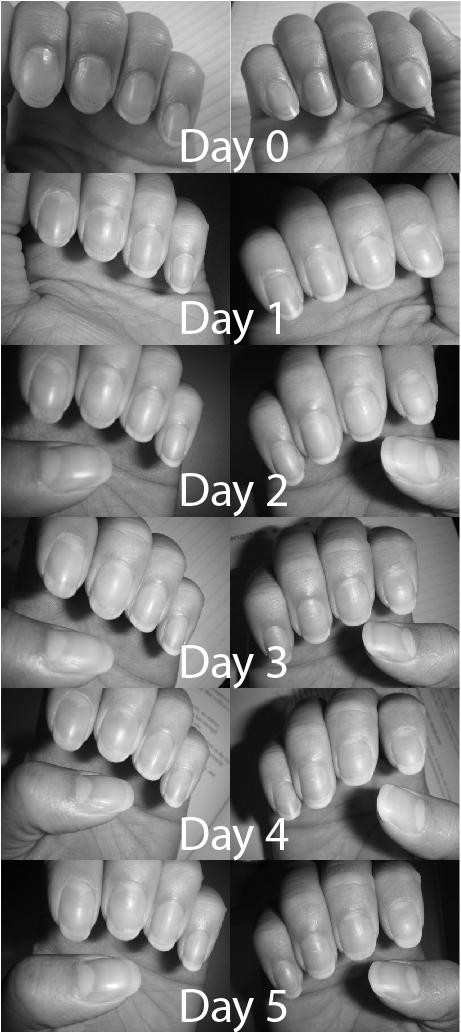
You might have heard that supplements and garlic can help speed up nail growth, but these are just myths. Your fingernail growth rate is set at three to four millimeters per month. If you constantly notice your fingernail breaking or looking too small, consider these tips. You may even be surprised at how quickly you can grow your nails if you know the proper diet to eat. But first, let’s get the facts.
Your nail growth rate is different for everyone, so make sure you follow the right tips to increase the speed of your nails. Moreover, prevent stress-induced biting and chronic cuticle manipulation from promoting healthy growth. These tips are backed by expert advice. Follow these steps, and you’ll soon show off your shiny, long nails! They might even help you overcome your problem! So, get ready for a new adventure with your hands and feet!
As mentioned above, your diet plays a vital role in your nail growth. If you eat a diet rich in protein, it can increase the speed and quality of your nails. Make sure to include chicken in your diet. Also, eat plenty of vegetables and fruits. Various fruits, especially apples and berries, contain potent antioxidants, which support healthy nail growth. If you’re a vegetarian, avoid artificial nails and harsh nail paint.
If you lack physical activity, consider joining a gym or yoga class. Exercise can also improve the health and length of your nails. However, excessive sweating can exacerbate infection and inhibit nail growth. You may also need to take keratin supplements. While these treatments aren’t the best option, you’ll still want to check your diet for protein and other nutrients. You’ll be surprised how many of these supplements can help your nails grow faster!
Another home remedy for nail growth includes coconut oil. Coconut oil is packed with antibacterial and antimicrobial properties. It nourishes your nails, forms a protective layer, and helps improve blood circulation. Better blood circulation means more nutrients are getting to your nails and quicker nail growth. If you’re concerned about your diet, try these natural remedies. They may help you grow your nails. But don’t forget to eat a balanced diet, and you’ll be surprised at how fast they grow.
While biotin and vitamin supplements do have some potential to improve the appearance of your nails, they aren’t proven to be effective. But if you’re deficient in one of these vitamins, consult a nutritionist or a vitamin specialist to find the right formula for your particular needs. Besides taking vitamins and minerals, massaging your nail beds is another natural remedy for faster nail growth. As a general rule, filing your nails prevents breaks and splits.
Conditions that slow down nail growth
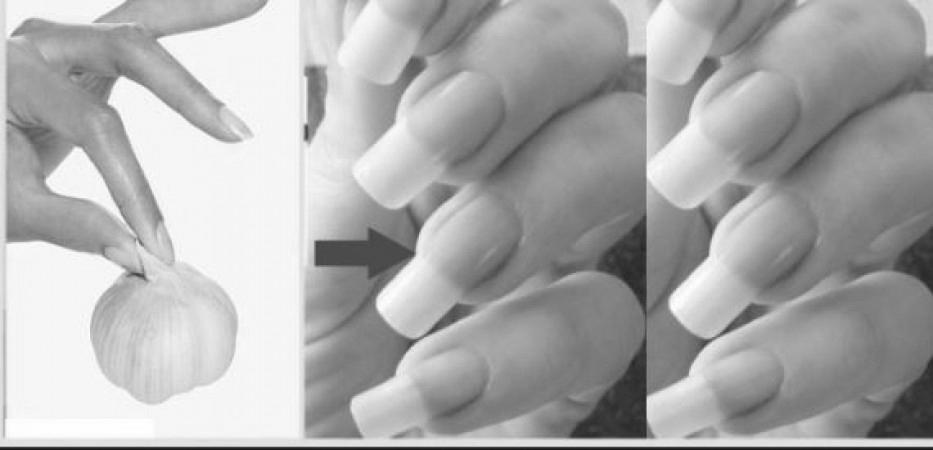
Nail growth is often affected by age and lifestyle. Certain medications and conditions, such as eczema, can slow down the growth of your nails. Other factors that influence nail growth include the time of day, the season, and vitamin deficiency. For people whose nails are weak, biotin can help increase their strength and speed up their growth. While the effects of biotin are individual, taking a daily supplement of this vitamin can significantly improve the power and speed of your nails.
In addition to conditions that slow down nail growth, various disorders can impair nail growth. These include yellow nail syndrome, a disease that results in thickened nails with a yellow hue. This condition may be due to various factors, including an impaired lymphatic system. The disease interferes with blood circulation, preventing the nails from getting oxygen and nutrients from the blood and tissues.
Other conditions that slow down nail growth includes a condition known as Beau lines, which cause horizontal depressions in the nail plate. A severe illness or injury can also cause it. Stress can shift energy away from the growth of your nails, making them brittle. This condition causes a temporary stop in nail growth, called Beau lines, and they will eventually grow back. The state is not a cause for concern.
Clubbed nails are another type of disorder that can slow down nail growth. This condition occurs when the soft tissue beneath the nail bed increases, giving your fingertips a bulbous appearance. It also results in an exaggerated convex shape of your nails. Sometimes, your nails may appear white, but these are not necessarily signs of disease. They may be caused by a fungal infection or an inflammatory bowel disorder.
A healthy nail should be smooth and void of ridges, spots, and grooves. Occasionally, your nails can exhibit harmless conditions caused by other factors. Among these are psoriasis, pityriasis, and hyperthyroidism. The onset of old age is also associated with slower growth. Sometimes, this is caused by a deficiency in the production of vitamin A. The same thing applies to calcium deficiency.
A dark stripe on your nail is a sign of various illnesses and conditions that affect nail growth. These may range from a simple bruise or splinter hemorrhage to serious health problems. Some nail changes can be signs of anemia, heart disease, or liver and kidney problems. However, if you’re not sure if a severe illness causes it, consult a doctor and get the necessary treatment.
Why Do Our Nails Grow and What is Their Function in Our Body?
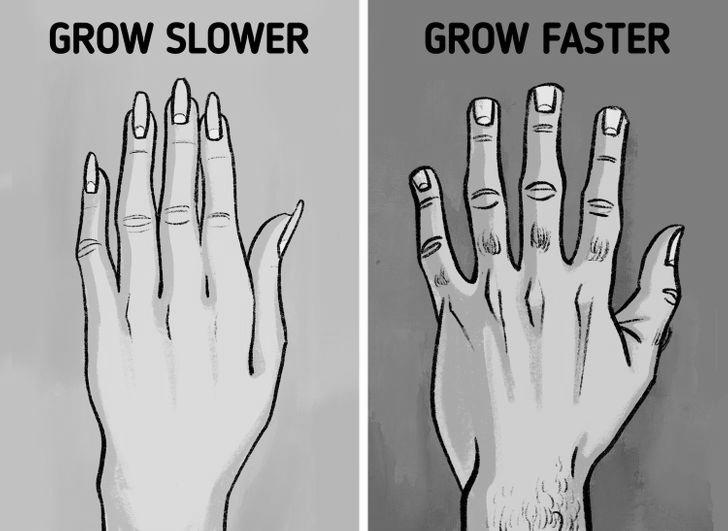
Fingernails are part of our integumentary system, a collection of glands, skin, hair, and nails. While they are often considered an impenetrable barrier, nails are porous, containing seven to 12% water. This makes them an excellent barrier against external elements. In addition, they serve a practical function. They prevent us from scratching and snagging objects.
A growing part of a nail
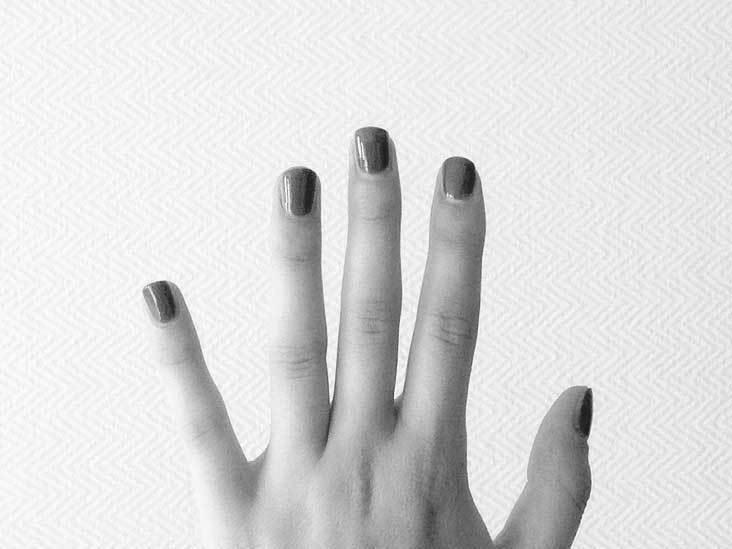
What’s the function of the Growing Part of a Nail in our Body? Well, nails are made up of cells that constantly produce new copies of themselves. They are a protective shield for the rest of our bodies. As the only living part of a nail, they protect the skin beneath from injuries. The growing role of a pin is under the epidermis. Here are some interesting facts about nails.
The human Body contains sebaceous glands located throughout the body and is typically related to hair follicles. These glands secrete sebum onto the surface of the skin and hair. During childhood, these glands are relatively inactive. Sebum is produced by the sebaceous glands, which help maintain body temperature. Although nails are made of a tough protein called keratin, they are not skin.
For example, Beau’s lines indicate a nutrient deficiency or a drug reaction, deep horizontal grooves. Ingrowing toenails, psoriasis, and other connective tissue disorders can affect the growth of the nail.
The growth pattern of fingernails
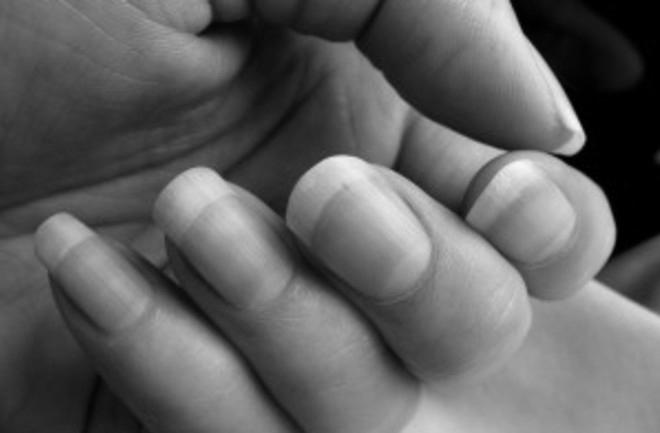
Did you know that fingernails grow faster than toenails? This is because fingernails have closer proximity to the heart than toenails. Several reasons why peripheral vascular disease may affect toenail growth and function. In addition, fingernails are made of keratin, a tissue type made of amino acid proteins. Keratin is naturally found in hair, nails, and horse hooves.
Fingernails protect our toes and fingers from damage and improve our distal movements. Their lack of nerve endings means that they are not living but have a protective shield necessary for our fingers. They also allow us to grip objects with extended precision and can be used in scraping or cutting actions. Because they are not living, these structures can indicate underlying medical conditions. This is why doctors assess fingernails to diagnose various ailments.
The growing part of a fingernail is located under the skin at its proximal end. This is called the epidermis. A continuous division of matrix cells pushes the nail plate forward over the nail bed. Fingernails can be either oblique or pointed. The former is the preferred shape for most people, though they are not practical for all purposes.
Several factors contribute to the growth of fingernails. Certain diseases cause them to grow in different directions. In addition to these, some people can suffer from a bacterial infection underneath their fingernails. This infection can lead to inflammation and a white-colored proximal extension. However, it is essential for those suffering from bacterial infections to seek medical attention if they appear on their fingernails.
Function of fingernails
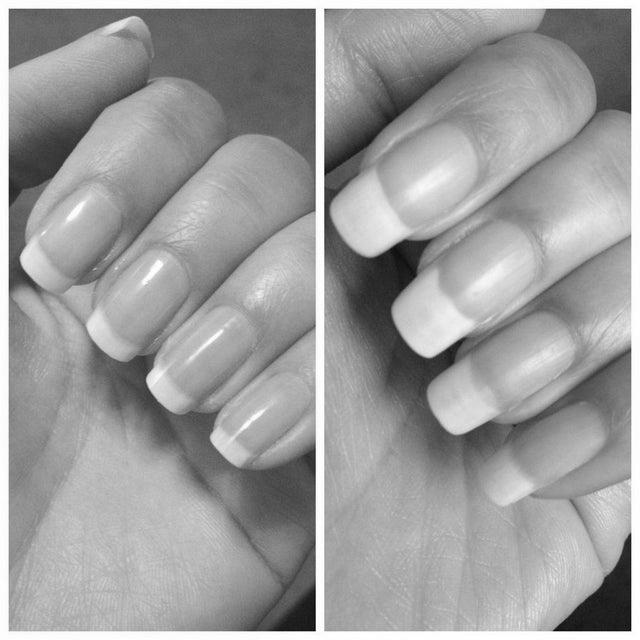
The primary function of fingernails is to protect the distal phalanx (tip of the finger) and the surrounding soft tissues from injury. They also increase the sensitivity of the fingertip and have an essential role in fine motor movements. Compared to other mammals, humans have fingernails. While most species have claws, they are used primarily for digging, scratching, and gripping objects. Fingernails protect the sensitive tip of the fingers and enable extended precision gripping.
Fingernails are made up of three layers, much like the claws of other animals. The nails are flattened and thick, enabling them to protect our fingers. These plates of tissue also help us sense our surroundings. They have many nerve endings under them, allowing us to detect objects in our environment and respond appropriately. Toenails are used in scraping and cutting, and they are handy for our Bodies.
The relationship between fingernails and underlying phalanx is embryologic. After birth, it changes. Inflammation of the underlying joint and bone can cause pitting and crumbling of the proximal nail matrix.
The nail is formed of a series of layers of cells. One layer is the nail plate, and the other is the nail bed. The first two layers of cells grow at the nail’s root, while the outer layer is the skin. The pin is then pushed upward toward the distal end of the finger, where it grows out. New cells grow in the nail plate, and the upper epidermal cells grow as the nail grows.
Signs of unhealthy nails
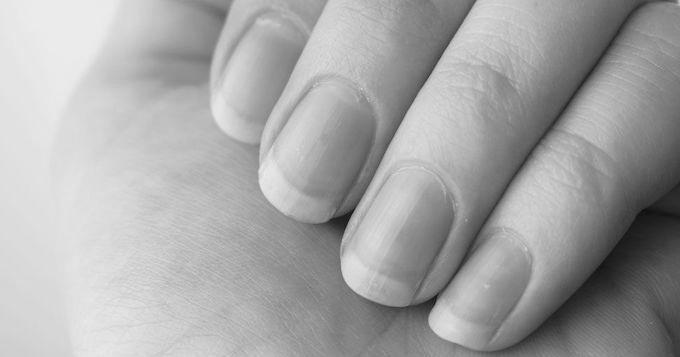
Your natural nails are important indicators of your general health. Sure signs can indicate vitamin deficiencies, skin diseases, and other problems. As such, it is essential to know what to look. Below, we’ll look at some of the most common signs of unhealthy nails and what you should do to treat them. Signs of unhealthy nails include ridges and spots and a white, crumbly texture or color. Unhealthy nails can also be an indicator of skin cancer or anemia.
Healthy nails should be pink at the nail bed and white at the tip. Any color other than these are indicators of a more severe disorder. Nails that appear yellow can be a sign of fungus. Fungus is a microscopic organism that infects your nails. This infection generally causes no pain, but it can cause embarrassment. When you notice these signs, see a physician for a diagnosis.
While it might be challenging to recognize your nails in your daily routine, an essential part of your overall health, you should see a dermatologist immediately if you notice any of these symptoms. It would help if you also tried to prevent these problems from recurring. Ultimately, the condition of your nails will determine the overall health of your body. Taking care of them is just as important as caring for your face. As your hand’s age, the skin on your hands loses firmness and becomes more prone to sunspots, wrinkles, and other signs of aging.
Another sign of unhealthy nails is a white ring or ridge in the nail bed. A white ring can be a sign of infection, trauma, or improper care.
Dietary factors that affect nail growth
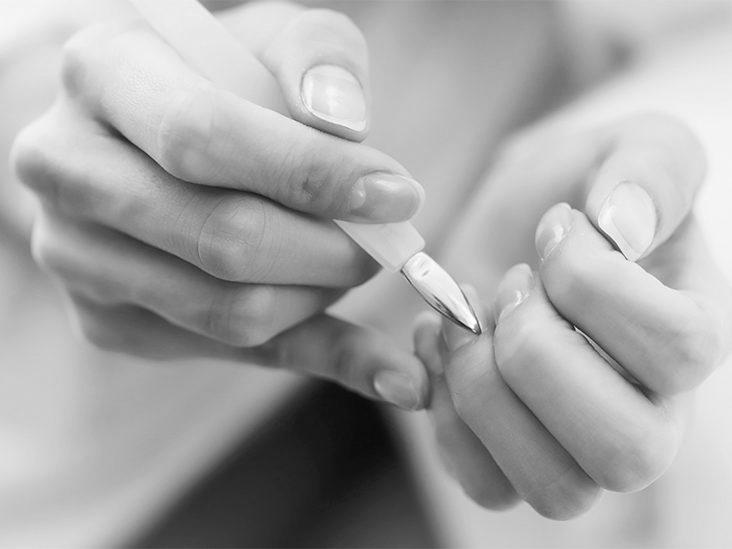
While several dietary factors affect nail growth, certain foods are better for your nails than others. These foods can promote healthy nails and strengthen weak ones. For example, if your nails tend to curl down, you may be lacking magnesium. Eat more dark leafy green vegetables, whole grains, almonds, cashews, peanuts, and black beans to boost magnesium. Also, increase your intake of vitamin D.
Poor diets can also cause weak and brittle nails. Insufficient vitamins, minerals, and dietary protein will lead to brittle nails. You can also have poor nail growth if you overeat fat and aren’t getting enough protein and iron. Inflammatory conditions, such as lung disease can also cause brittle nails. Poor diets can lead to a lack of these nutrients and prevent nail growth and its associated complications.
A diet low in vitamin B12 may cause brittle, dull, and flaky nails. Vitamin B12, also known as coenzyme Q10, is needed to produce collagen, the protein that gives skin and hair shape. Vitamin C can be found in dark green vegetables, nuts, and seeds. It is usually found in animal products but can also be added to other foods. It plays a vital role in producing red blood cells, which are essential for nail growth.
Insufficient protein intake may also hinder nail growth. Protein helps to repair damaged nails and makes them strong. A diet rich in protein will also promote nail growth. Eating plenty of meat and poultry is an excellent source of protein. But if you want to have thick, healthy nails, include nuts, lentils, and legumes in your diet. Also, eat plenty of dairy products, including cheese. If you are worried about your nail growth, you can consult with a physician.
